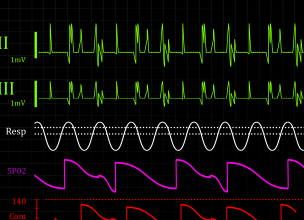The World Health Organization estimates that around 619 million people around the world suffer from lower back pain. Sadly, the problem can be difficult to rectify if you don’t know what is the root cause. Many people have back pain issues due to bad posture.
If you’re experiencing chronic back pain and aren’t exactly sure why, your posture could be to blame. When you maintain a poor posture that puts excessive strain on your spine or surrounding muscles for extended periods, it can lead to discomfort and pain. Slouching, hunching over a desk, and sitting or standing with an uneven distribution of weight are all examples of poor posture that could potentially lead to back pain. Poor posture can also affect other areas of the body, leading to pain or discomfort in the shoulders, neck, and hips as well.
How poor posture contributes to back pain.
Spinal Misalignment: Poor posture can lead to muscular imbalance and then spine misalignment, causing stress on the vertebrae and the supporting structures. This misalignment can result in chronic discomfort and pain in affected areas.
Muscle Imbalances: Maintaining improper posture for extended periods can lead to muscle imbalances. Some muscles become overused and tight, while others weaken and become less effective. Over time, this imbalance can contribute to back pain.
Increased Pressure on Discs: The intervertebral discs in the spine act as cushions between the vertebrae. Poor posture, especially when sitting with a rounded back, can increase pressure on these discs, leading to wear and tear and potential pain in your back.
Strain on Supporting Muscles: Poor posture can strain the muscles that support the spine. The back muscles, as well as those in the neck and shoulders, may be forced to work harder to maintain an improper position, resulting in fatigue, discomfort, and pain.
Restricted Blood Flow and Nerve Function: Poor posture that isn’t corrected may restrict blood flow and compress nerves in the affected areas, leading to pain, tingling, or numbness with time.
It’s crucial to be mindful of your posture, whether sitting, standing, or engaging in various activities to help prevent or alleviate back pain. Maintaining good posture involves aligning your body correctly and distributing weight evenly to reduce stress on your spine and body frame.
Regular exercise, stretching, and strengthening exercises can also promote better posture and reduce the risk of back pain. If you’re experiencing persistent back pain, it’s advisable to consult with a healthcare professional for an accurate diagnosis and appropriate treatment plan, however, there are some steps you can take at home to improve your posture and reduce back pain. Dr. Thomas Pontinen, co-founder and physician at Midwest Anesthesia and Pain Specialists (MAPS), shared the following tips for improving posture and preventing or treating back pain.
Invest in Ergonomic Furniture: Ensure that your work environment is ergonomically designed. Use a chair that supports the natural curve of your spine and position your computer screen at eye level to reduce strain on the neck.
Take Regular Breaks: Remember to take frequent breaks throughout your day to stretch and move around, especially if your work involves long periods of sitting. Simple stretches and movements can help prevent stiffness and improve circulation.
Exercise and Strength Training Daily: Engage in regular exercise, including activities that strengthen the core and back muscles. Strong muscles provide better support for the spine and help maintain good posture.
Awareness and Mindfulness: Be mindful of your posture throughout the day. Check in with your body regularly and make adjustments to maintain a neutral spine position. It may help to set alarms on your mobile device to remind you to check your posture or ask a colleague or family member to hold you accountable and correct you if they notice slouching.
Stretching Routine: Incorporate stretching exercises into your daily routine, targeting areas that commonly become tight due to poor posture, such as the hamstrings, hip flexors, back, and chest.
Posture-Correcting Devices: Consider using supportive devices, like ergonomic chairs, lumbar rolls, or posture braces, to help maintain proper alignment. Over time these devices will help make good posture a habit.
Professional Guidance: If back pain persists, consult with a healthcare professional, such as a physical therapist or chiropractor, for personalized advice and exercises. Clinics such as MAPS can provide different therapy options based on your unique needs to improve your posture and overcome back pain.
By addressing and correcting poor posture habits, you can significantly reduce the risk of developing or worsening back pain. With the right advice and therapies and incorporating lifestyle changes and exercises into your daily routine, it’s possible to reduce back pain and improve your posture holistically without surgery or medication.








